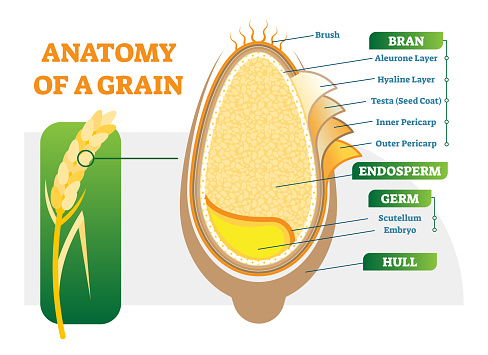W
heat is a globally dominant source of food that traces back to our ancestors. It is the second largest grain consumed in the world after rice. Bread, pasta, pastries, cookies, crackers, they all sound good and are indeed delicious, aren’t they? I agree. So, if wheat is such a significant part of our food intake, isn’t it wise to understand how it affects our body nutritionally?
I have certainly gained interest on this topic recently for a couple of reasons. First, as an Ayurvedic practitioner, it is essential that I educate my clients on the importance of nutrition, as food is a natural source of healing. Second, I am witnessing a common denominator in the root cause of doshic imbalances my clients are experiencing: chronic inflammation and dietary malnutrition often due to an excess consumption of sugar and carbohydrates, most specifically wheat products.
The challenge with wheat products is twofold. Modern production of wheat has given rise to gluten sensitivity and related health indications. Furthermore, the milling process of wheat significantly reduces its nutritional value. The former is harder to escape, although still possible. But the latter is a choice we have control over. Let me explain.
The anatomy of a whole wheat grain is shown in the picture below. It has 4 parts: The hull, the bran, the endosperm, and the germ (seed). Wheat bran (outer layer of the grain) followed by the germ, (the seed) contain the highest amount of crude protein, fat, fiber, antioxidants, and minerals compared to the endosperm (starch-rich center of the grain).

Conventional milling is a process that separates the bran and germ from the endosperm, the key ingredient in flour, which is used to make bread, pasta, cake, etc. Therefore, milling significantly reduces the nutritional value of wheat. In some cases, synthetic minerals and vitamins are added to the flour before packaging, but we are losing the essence of nutrition from the plant itself.
According to Ayurveda, when wheat products are processed in this way, they also lose their prana or life force energy. The more processed our food source, the less nutritional value and prana it contains. In our body, this translates to a lack of vital minerals, fiber, antioxidants, and other essential nutrients that we strive to replace with synthetic supplements.
A question you might ask is, why do we need to mill the wheat grain? Simple answer: it has a more preferred taste by consumers, and it becomes better equipped for cooking and baking purposes. A Study published by the Food Science & Nutrition journal (Heshe et. al., 2015) examined consumer preferences for taste, odor, and texture in bread with various bran level content. More specifically, the samples included breads containing 0% (control group), 10%, 20%, and 25% bran content. 0% group defined as purely white flour bread. What they found is that although the preference scores dropped as the bran content increased, the ratings for 25% bran bread were not as low as expected, with average ratings of 4.5 (neither liked nor disliked) on a 7-point Likert scale. What this implies is that taste is not necessarily a factor to discount wheat products with higher bran content.
Of course, taste is an important parameter in the consumer market. However, ingredients that are a significant part of our daily intake require further attention of the micronutrient content they provide. Deficiency of micronutrients such as iron and zinc are critical and major problems, leading to reduced cognitive ability, increased mortality, and lowered quality of life. So, when choosing our food products, it is important to consider the nutritional value they provide. I hope this article shines light on your healing wisdom. Till next time.
